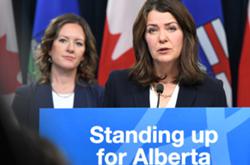Health Minister Mark Holland announced in August that the federal government intends to introduce pharmacare legislation in the fall. Now the battle lines are being drawn.
One of the many virtues of pharmacare — a universal drug coverage plan — is that there will be a single bargaining agent looking for lower prices from the drug companies. Australia has a single buyer and has brand-name prices that are on average 29 per cent lower than Canada’s. That difference on Canadian annual sales of $17.4 billion translates into savings of about $5 billion.
Pharmaceutical and insurance industries that stand to lose profit through lower drug prices are not happy about pharmacare. They are speaking out and mobilizing their allies.
On the perils of ‘filling in the gaps’
Innovative Medicines Canada, the lobby group for Big Pharma, is pushing for a “fill in the gaps” model. That means providing coverage for people who don’t have drug insurance, but leaving the current system otherwise untouched.
Quebec already has “filled in the gaps.” However, it hasn’t achieved the solutions shown in countries with pharmacare. Quebec spends more per capita on drugs than other provinces. A greater percentage of people in Quebec (8.7 per cent) report spending more than $1,000 on prescription drugs in one year, compared to comparable countries with pharmacare (three per cent) or even the rest of Canada (4.8 per cent).
In Quebec, nine per cent of its residents report that they go without their medications because they cannot afford them. While this is an improvement on the rest of the country, with 11 per cent of Canadians in other provinces skipping medications due to costs, it is still significantly higher than the numbers in most comparable countries with pharmacare (six per cent or less).
Coverage doesn’t necessarily make drugs affordable
GreenShield, a not-for-profit health benefits provider and a member of the Canadian Life and Health Insurance Association, appears to share the insurance industry’s stand against pharmacare. In July it announced a pilot program that will offer up to $1,000 in drug coverage to low-income Canadians who do not have public or private prescription drug insurance.
In making the announcement, GreenShield’s chief executive Zahid Salman repeated the myth that 97 per cent of Canadians already have drug coverage. That 97 per cent number is theoretical. Having some form of coverage does not necessarily make drugs affordable. For example, if you live in Manitoba and your family income is $47,500, you’ll first have to pay $2,760 out of pocket. Anything less and there’s no public coverage.
According to a recent report from Statistics Canada, 33 per cent of seniors in Manitoba don’t have drug coverage. (That figure might be lower if some seniors who are eligible for provincial insurance didn’t register or were unaware that they were covered.)
Not everyone has workplace benefits
CLHIA came out swinging after the federal NDP tabled a pharmacare bill in June. The NDP’s bill called for a federal, universal, public and single-payer drug plan. In other words, a plan similar to what Canadians already enjoy for doctor and hospital services.
Denis Ricard, chair of the CLHIA’s board of directors, has claimed that “a fully one-payer national pharmacare is going to be a disaster for this country.”
The Better Health Benefits, Together campaign being run by the CLHIA warns that Canadians “can’t afford to lose their workplace benefits because of politics.... Done the wrong way, Canadians will lose access to medicines they use today.”
The campaign fails to mention that workplace benefits do not cover everyone, and exclude those experiencing unemployment, which affects some populations more than others. For example, racialized Canadians have a higher unemployment rate than the rest of the population and therefore are less likely to have work-based drug coverage.
Nor does the campaign mention that, according to Statistics Canada, “the majority of insurance coverage changes due to the pandemic were negative,” with immigrants faring worse than non-immigrants.
Don’t let this language fool you
Joining the battle against pharmacare is Brett Skinner, the CEO of the free market Canadian Health Policy Institute. Skinner’s message is that a national government-run drug insurance program is not necessary and will be bad for patients and costly for taxpayers.
He argues that private plans cover more drugs, and cover new drugs more quickly than public plans, and that if Canadians are faced with high deductibles there are provincial programs to deal with them.
He neglects to mention that only about 10 to 15 per cent of new drugs provide any substantial new benefits compared to existing drugs. He fails to note that a third of the difference in the time between public and private coverage is because drug companies don’t take advantage of the opportunity to apply for coverage as quickly as they could.
Skinner also ignores the fact that people living in Manitoba with an annual income of just over $55,000 who are taking three drugs a day are faced with deductibles of up to $350 every three months. British Columbia residents aren’t far behind at $300 every three months.
Big Pharma, the insurance industry and free market zealots are all motivated by money and ideology. In a battle over people’s health, greed shouldn’t be the winner.![]()
![]()
Read more: Health, Rights + Justice, Federal Politics

















Tyee Commenting Guidelines
Comments that violate guidelines risk being deleted, and violations may result in a temporary or permanent user ban. Maintain the spirit of good conversation to stay in the discussion and be patient with moderators. Comments are reviewed regularly but not in real time.
Do:
Do not: